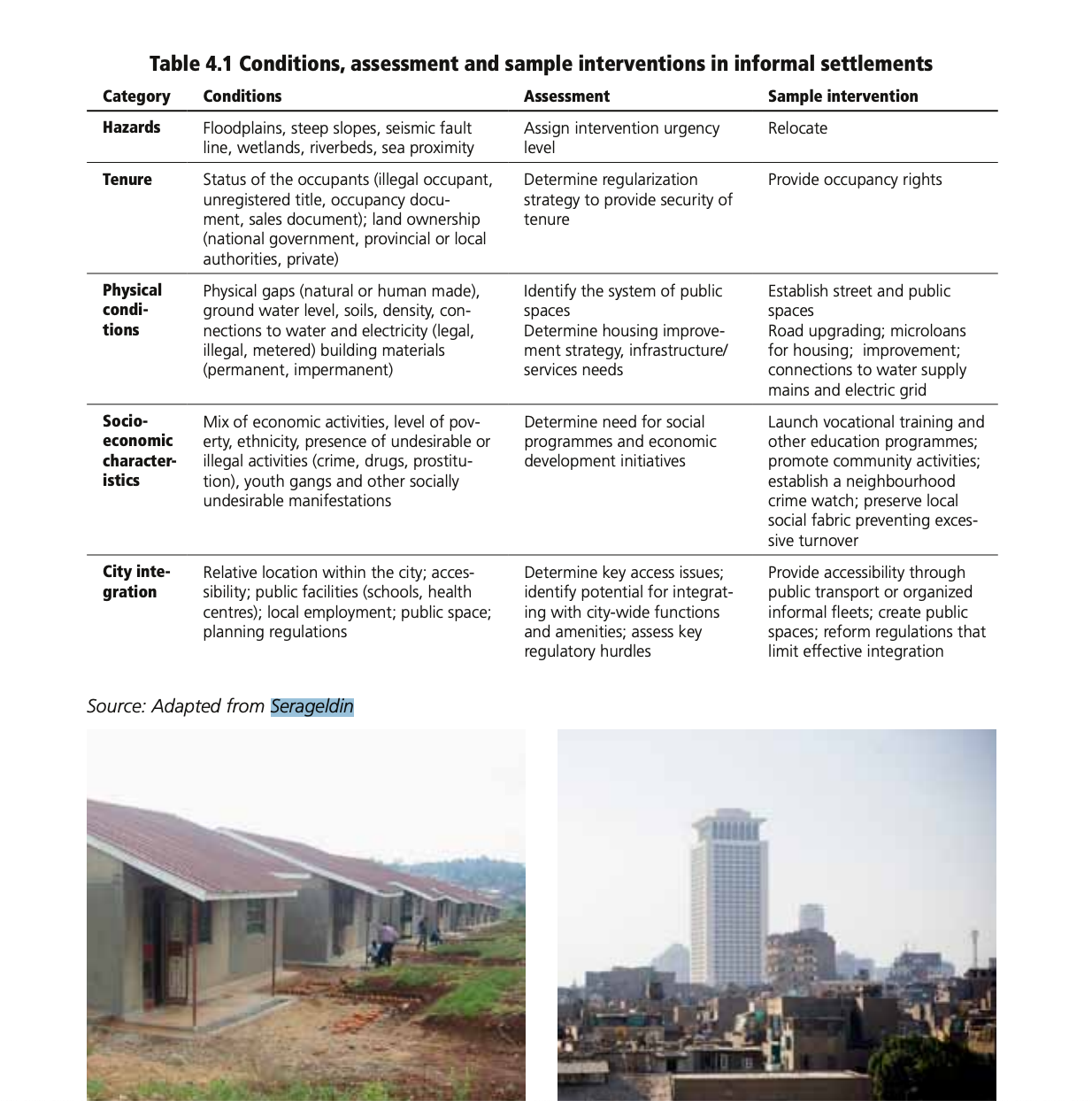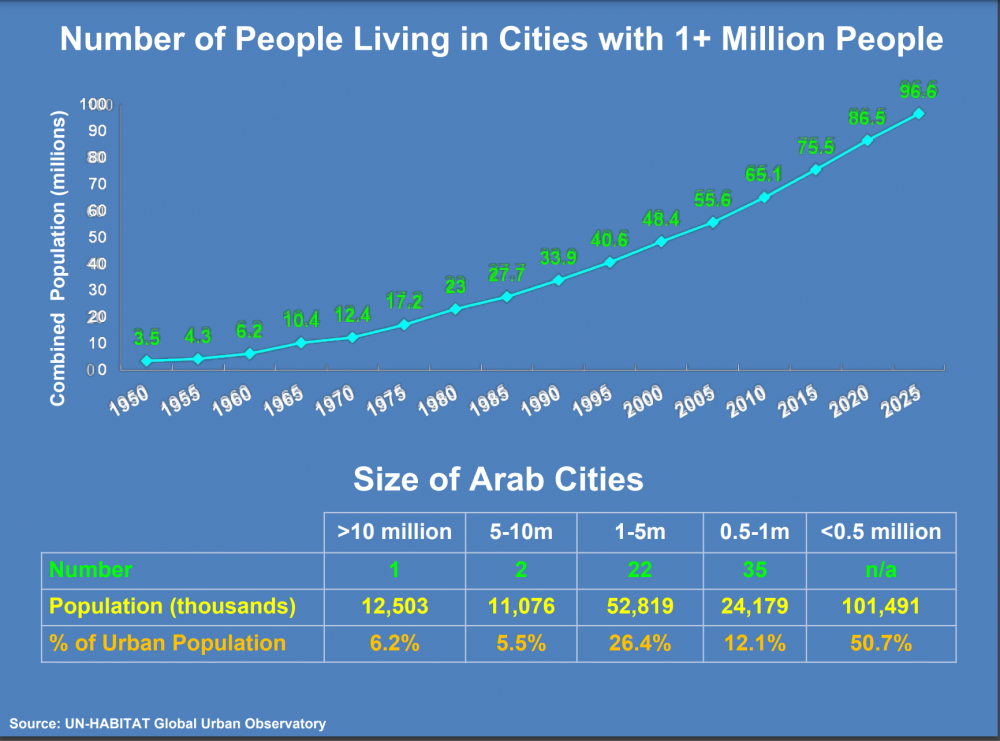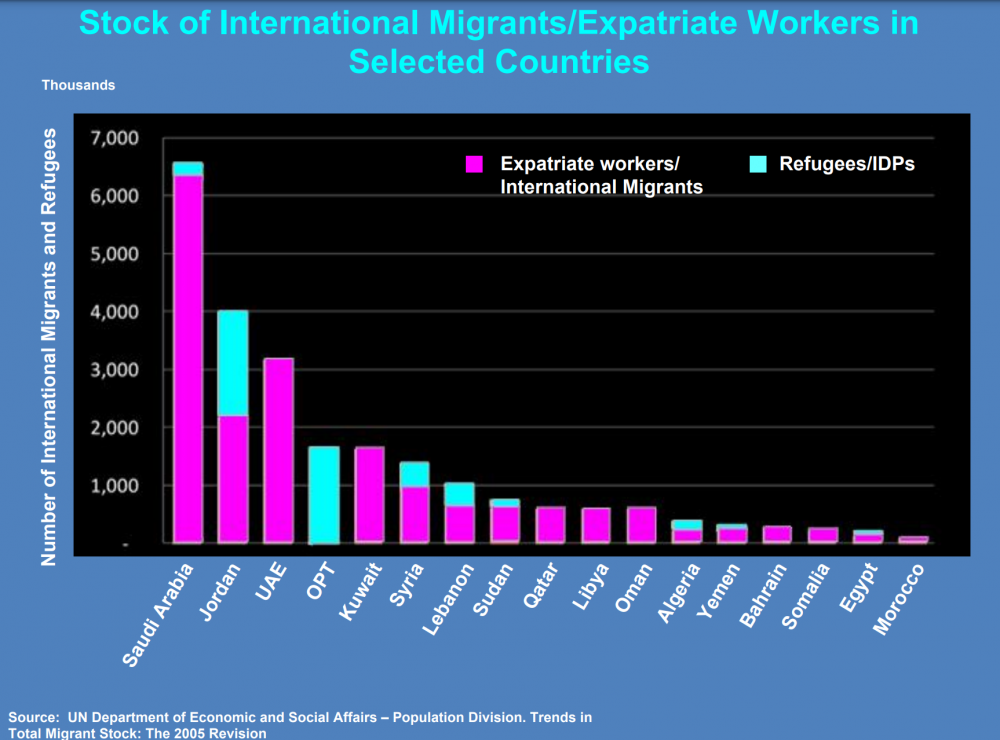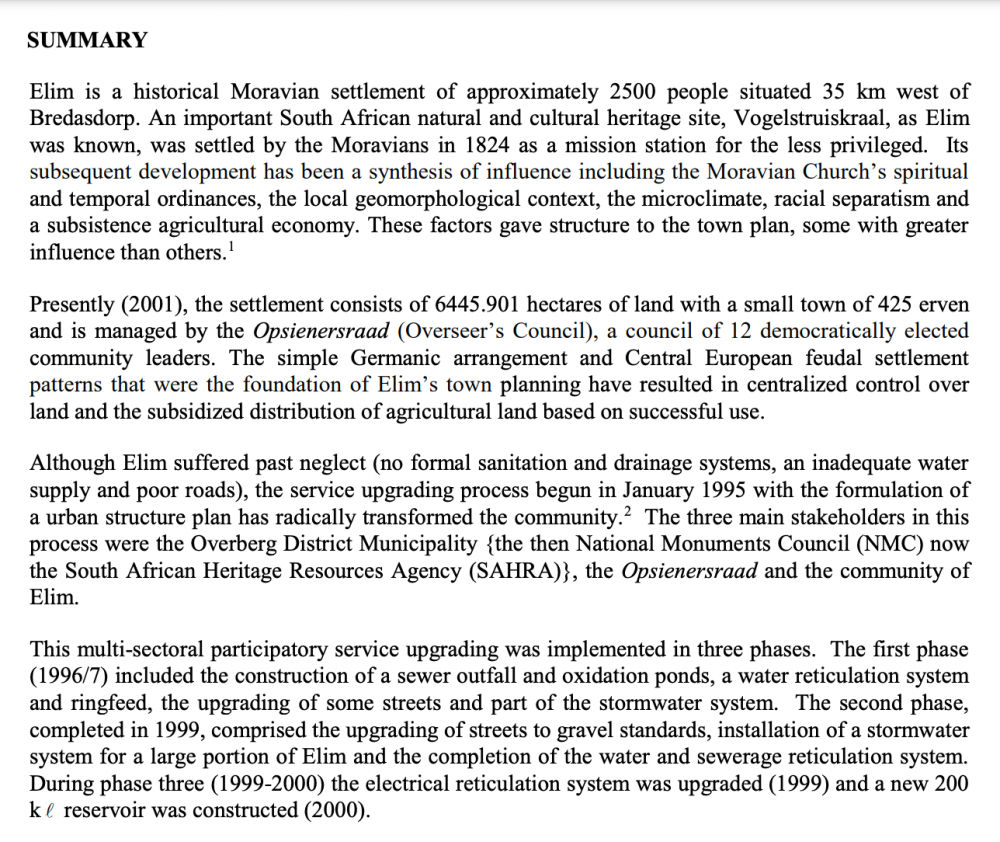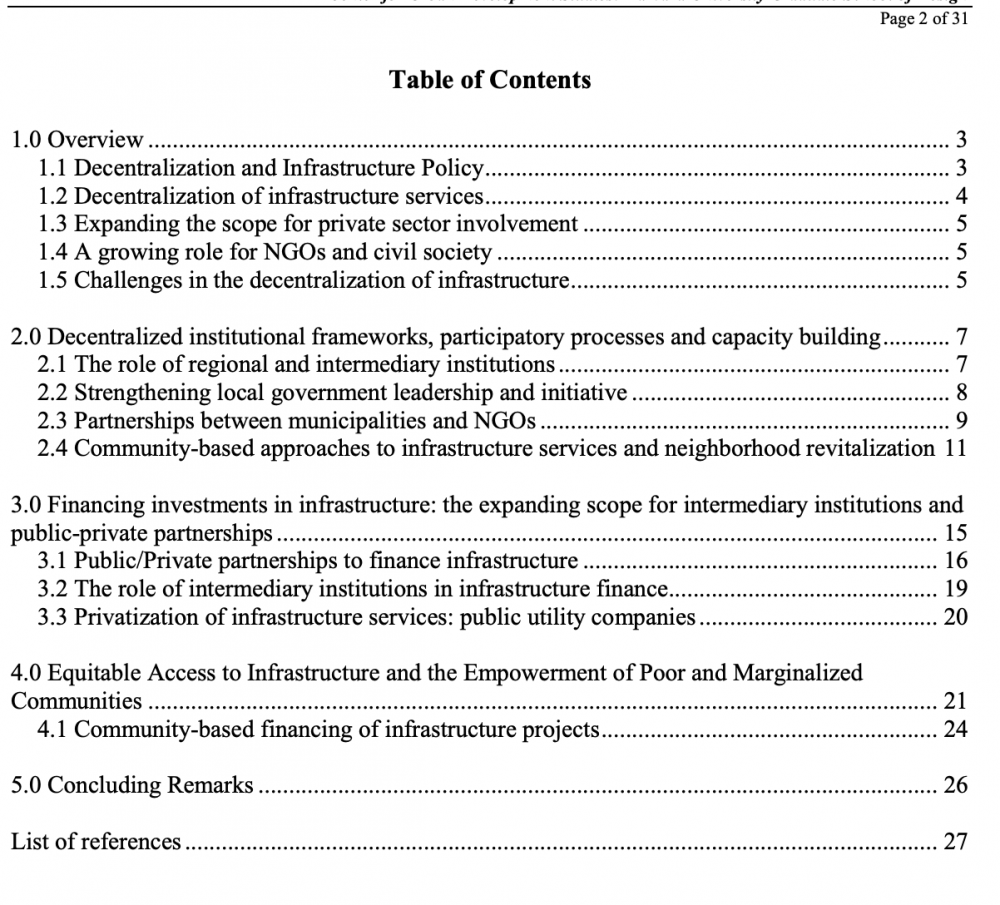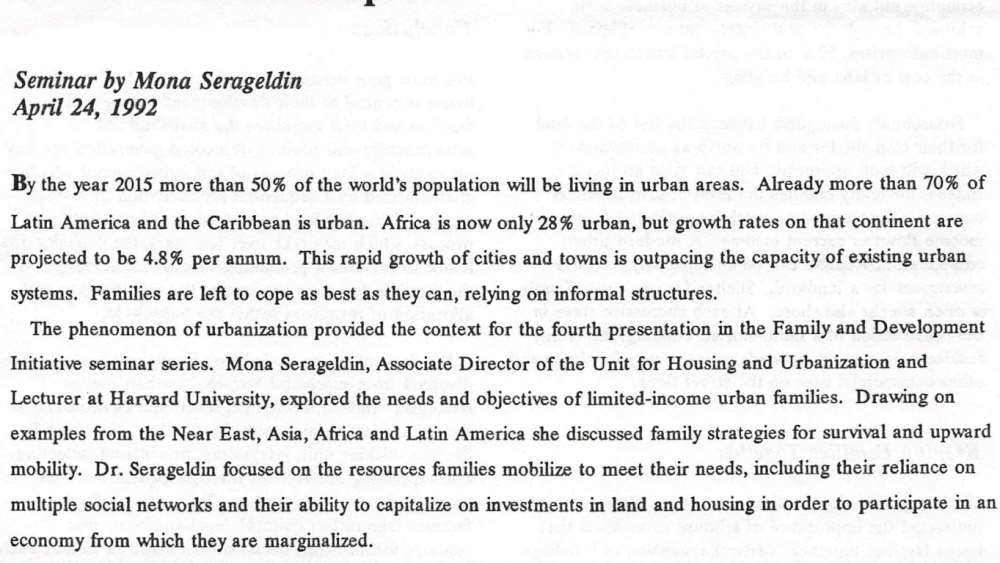Abstract
In 2016, the Institute for International Urban Development (I2UD), led by Mona Serageldin and François Vigier, acted as main contributor to a report, “Habitat III Regional Report for the Arab Region,” implemented under the UN-Habitat Regional Office for Arab States (ROAS) and the United Nations Economic and Social Commission for Western Asia (ESCWA).
Topics include “Inclusive cities,” “Migration and Refugees in Urban Areas,” and “Land Structure, Process, and Outcome.” Documents are a range of preliminary draft materials, expert group meeting materials, and full report. Presentations are from Expert Group Meetings in Beirut and Cairo, and for the May 2017 ICNUP Conference. Two draft issue papers from 2015 were presented at the Habitat III conference in Quito, Ecuador in October 2016.
| Project Year: | 2015 |
| Project Type: | Regional Report |
| Geographic Regions: | Beirut, Lebanon and Cairo, Egypt (Meeting Locations) / Quito, Ecuador (Conference Location) |
| Reports: | |
| Authors: | Mona Serageldin; FrançoisVigier; Barbara Summers; Maren Larsen; Johann Friedl |
| Sponsors: | UN-Habitat; United Nations Economic and Social Commission for Western Asia (ESCWA); UN-Habitat Regional Office for Arab States (ROAS) |
| Categories: | Climate Change and Resilience Building |
| ID: | 2015_10_003 |
Related I2UD Projects
Related by – Regional Assessments
Related I2UD Photograph Galleries


